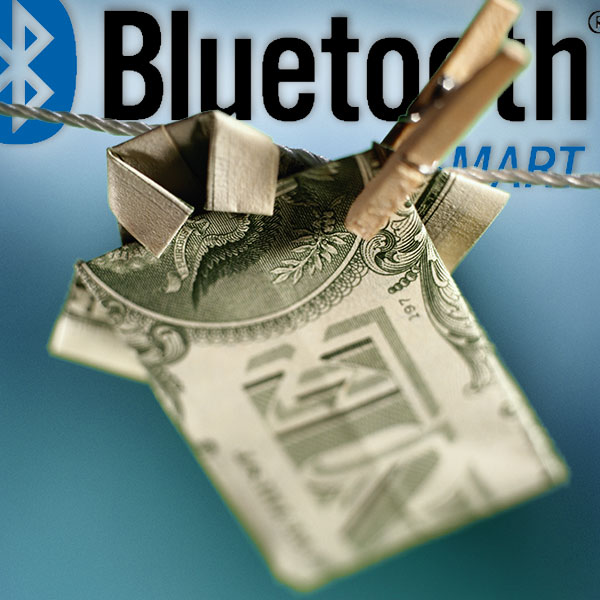- Home
- Symmetry Blog
- Cost Advantages for Using Bluetooth Low Energy (BLE) Modules
Cost Advantages for Using Bluetooth Low Energy (BLE) Modules
Monday, July 14, 2014

If Bluetooth Low Energy (BLE) is not part of your electronic designs just yet, chances are it will be soon. Overall, wireless technology has shown continued growth over the last few years. It now provides low-power connections to thousands if not millions of electronic devices, such as wearables, cell phone accessories, and medical products. Thanks to new and improved technical achievements, BLE is now poised to become even more ubiquitous in the next wave of electronics and the overwhelming Internet of Things (IoT).
Introduction to Bluetooth Low Energy
BLE is also referred to as BLE4.0, and since being updated to version 4.1., is much different than Classic Bluetooth, although both include many of the same benefits. For wireless devices that have been maximized for low power usage rather than high speed transfer rates, BLE is a natural choice. BLE’s peak current draw is a low as 15 mA, compared to 40 mA or more for Classic Bluetooth. With a very low current draw, BLE can run on a single coin-cell battery, such as a CR2032 battery, for 5 to 10 years, depending on the application.
To achieve such low power usage, BLE moderates whether the radio is on or off. Current power consumption is increased while the radio is on. However, BLE scans only three advertising channels, and its radio awakens only to send or receive short bursts of data, with small packet sizes from 8 to 27 octets. BLE also sets up connections very quickly, which further minimizes the radio’s on time. BLE can transmit authenticated data in as little as 3 ms, versus the 1000 ms typical for Bluetooth Classic. As for data rates, BLE’s maximum practical data rate is typically well under 100 kbs. So it’s not intended for the continuous data streaming applications possible with Bluetooth Classic, which offers data rates up to 3 Mbps. BLE can also have unlimited nodes via a Star-Bus Network Topology. Since BLE has a 32-bit access address on every packet for each node, it allows for an unlimited number of devices to have connections.
4 Technical Features of Bluetooth Low Energy
- Optimized Gaussian Frequency Shift Keying (GSFK) modulation. Like Bluetooth Classic, BLE makes use of a GSFK modulation scheme. BLE has a modulation index that can be configurable between 0.45 and 0.55, which is higher that Bluetooth classic, and on 2MHz channels this allows for a reduced BER (bit error rate) which overall provides better range.
- Adaptive frequency hopping. BLE technology uses the same adaptive frequency hopping scheme as Bluetooth Classic when devices are connected. Adaptive frequency hopping minimizes interference from other technologies in the 2.4 GHz ISM Band shared by the multitude of wireless devices operating in this spectrum.
- Fast cyclic redundancy check (CRC). BLE uses single 24-bit CRC on each packet, allowing the header and data fields to detect odd number bit errors as well as 2- and 4-bit errors. The 24-bit CRC, instead of 16- or 32-bit CRC, is for BLE’s data payload. This allows for fast error checking and data payloads are optimized.
- Tight security. BLE encryption and authentication is implemented using 128-bit Advanced Encryption System (AES-128), an encryption system developed by the U.S. Government to safeguard data. Another crucial aspect of BT 4.1 is its dual-mode capability. While devices such as sensors or phone accessories often use BLE by itself, smart phones and tablets frequently act as wireless hubs that communicate via both BLE and Bluetooth Classic. The Bluetooth core specification makes this dual-mode implementation possible. In essence, dual-mode modules combine the Classic and BLE communication stacks and permit a shared antenna.
5 Cost Advantages of Bluetooth Low Energy Modules
- Low production volumes. At production volumes under 50,000 units, modules have a cost advantage over a discrete solutions. Including the development, manufacturing, RF certification, and testing costs (these can be huge) of a discrete-based BLE design, you will find that the cost can be between $100,000 and $200,000. Average those costs over volumes under 50,000 and the cost of RF can get really expensive. At volumes from 50,000 to 100,000, either the module or chip solution can make sense from a total cost standpoint. Over 100,000 units, it just may make sense to do a discrete design.
- Faster design cycles get product to market quick. Modules also enable the time-to-market formula by typically taking a few short months to develop—and during that time experienced RF engineers are not necessarily required. Most of the design focus is in programming APIs and script text for communicating with the TCP/IP stack. Modules are a significant cost reduction to the development process. Modules are also pre-certified, which eliminates the time and cost of the RF radio certification process. They can be dropped into a new product design in a matter of days and weeks, supporting a quick time to market scenario.
- Modules last longer. Module use will protect against the obsolescence of products that have lifecycles that in fact will last longer than IC’s. Module designs will use newer chips when appropriate without changing the actual pins. The module will function with the same peripheral or firmware interface.
- Connection improvements. Engineers will have better adaptive and ease of design in creating and maintaining Bluetooth connections, including automated reconnections.
- IP-based connections for markets like the Internet of Things (IoT). The new 4.1 specification creates the core design for IPv6 communications by adding dedicated L2CAP channels, which allow for better data transfers. In addition, there are new and improved enhancements to the 4.1 spec for IPv6. Look for the enhancements contained in 4.1 to start appearing in BLE and dual-mode chips and modules.
We’d love to help you get started with a BLE-enabled design. Call Symmetry Electronics at (310) 536-6190, or contact us online.